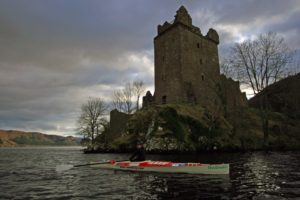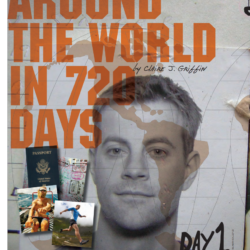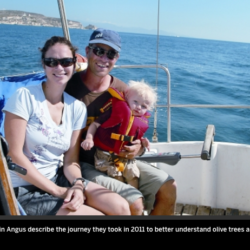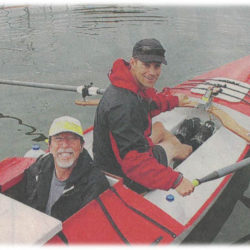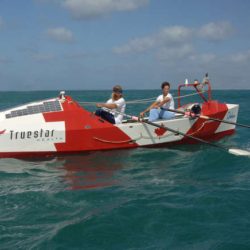It’s been ten days since Julie, Leif and I left from Comox, and we`re pleased to say we have finally found the boat we will be sailing the Mediterranean in.It’s a 28 foot Spanish-built Sumplast.The process of searching for the right boat has not been easy.Since arriving in Madrid, we’ve travelled almost 2500 km examining various boats for sale along the Mediterranean Coast.The process is made even harder by the fact that our Spanish is abysmal, and about half the proprietors speak no English.This is a typical inquiry phone call:
“Losiento, no hablo Espaniol.Hablo Ingles ?“
“No“
“Uh…. Barco ?“
…and so it continues, as we struggle to work out the basics of the meeting time and place to view the boat.Unfortunately, most of the early boats we looked at didn`t meet our needs.Our boat needed to be reasonably priced (we have no idea whether we`ll be able to sell it at the end of the trip), seaworthy, comfortable, and comply with the strict maritime regulations imposed by the Spanish.
Leif, meanwhile, has been doing well through the long tedious days of boat searching.He loves being freed from the confines of our rental car and socializing with the warm Spanish people.He is a high maintenance baby at the best of times, but the constant change in scenery and stimuli suits him well.
Away from the Mediterranean, the Spanish countryside is dry with scrubby vegetation and small mountains and hills – perfect for olive trees.At this point, we haven`t yet had time to begin our olive research, but it is already apparent that the olive is king in this region.Endless groves of olive trees line the sides of the highways between towns.Old olive trees are also considered prime accents for manicured estates, and many of the fancy hotels we pass feature a gnarled olive tree near the entrance.These trees, many hundreds of years old are purchased from nurseries that dig them from farmers fields.We stopped at one such nursery and found a few specimens over a thousand years old selling for about $8000 Euros.
We visited the ancient city of Cartagena on our seemingly-endless search for the right boat.Unfortunately, the boat we viewed was in rough shape, and definitely not seaworthy enough for our needs.There were two other boats that we were interested in here, but not for purchasing.Cartagena was colonized by the Phoenecians almost 3000 years ago.Interestingly, although historians knew that Phoenecians were great seafarers, until recently it was not known what their ships looked like.In the last few decades, however, the first Phoenecian shipwrecks were discovered just near Cartagena offering a trove of information on Phoenecian shipbuilding.The wrecks were made from a variety of woods, including olive wood, and we were able to examine the 2700 year-old hull in the Cartagena Underwater Archaeological Museum.
From Cartagena we carried on to Barcelona where at last we found the ideal boat for our trip.The vessel is 28 feet long, sloop rigged and has a diesel engine.We will be finalizing the deal tomorrow, and within a week or so will be ready to begin our sailing odyssey through the Mediteranean.
The bad news, however, is Julie got pick pocketed yesterday in the heart of Barcelona losing $200 plus all her credit cards, bank cards and driver’s license.Painful as it was, it could have been worse, and serves as a reminder we need to be vigilante from now on.




